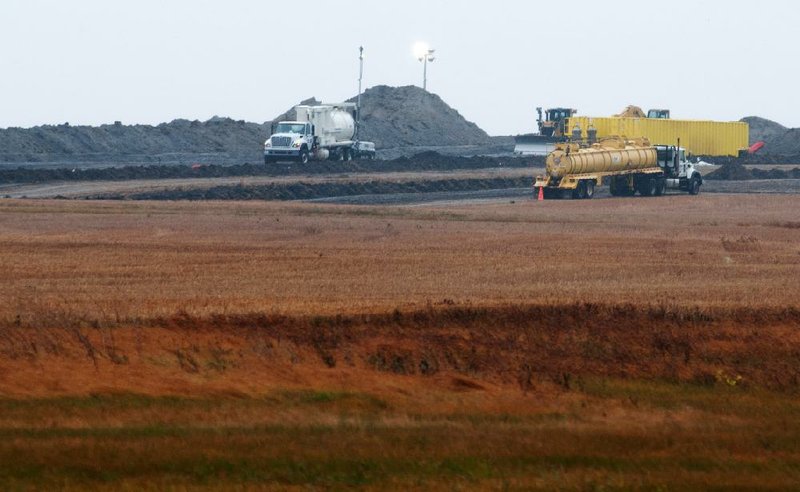BISMARCK, N.D. - North Dakota, the nation’s No. 2 oil producer behind Texas, recorded nearly 300 oil pipeline spills in less than two years, state documents show. None was reported to the public, officials said.
According to records obtained by The Associated Press, the pipeline spills, many of them small, are among some 750 “oil field incidents” that have occurred since January 2012 without public notification.
“That’s news to us,” said Don Morrison, director of the Dakota Resource Council, an environmental-minded landowner group with more than 700 members in North Dakota.
Dennis Fewless, director of water quality for the state Health Department, said Friday that regulators were reviewing the state’s policies for when to publicly report such spills after a large one was discovered last month in northwestern North Dakota by a wheat farmer. State and company officials kept it quiet for 11 days.
North Dakota regulators, like in many other oil-producing states, are not obliged to tell the public about oil spills under state law. But in a state that’s producing a million barrels a day and gained nearly 2,500 miles of new pipelines last year, many believe the risk of spills will increase, posing a bigger threat to farmland and water.
“We’re certainly looking at that now and what would be a threshold for reporting to the public,” Fewless said Friday. The state also is mulling a better system to track spills in-house, Fewless said, from their origin to cleanup status.
The Health Department announced late Friday that it is testing a website to publish information on all spills reported to the department.
Dave Glatt, chief of the department’s environmental health section, said the website would likely go live in two to three weeks. He said officials were still considering how large a spill should trigger a public announcement in addition to being published on the website.
A spill-tracking system would be valuable for the public, too, said Louis Kuster, who raises wheat near Stanley in northwest North Dakota. Farmers and ranchers rely on land for their livelihood, so information on spills that could threaten land or water supplies “absolutely is important for us to know,” he said.
For almost two weeks, no one knew about a break in a Tesoro Corp. pipeline that was discovered Sept. 29 in a remote area near Tioga. Officials said no water was contaminated or wildlife hurt, but the spill was one of the largest in North Dakota’s history, estimated at 20,600 barrels. Oil oozed over an area the size of seven football fields.
Records obtained by the AP show that aside from that pipeline break, North Dakota has recorded 139 pipeline leaks that spilled 735 barrels of oil this year. In 2012, there were 153 pipeline leaks that spilled 495 barrels of oil, data show.
A little more than half of the spills companies reported to North Dakota occurred “on-site,” where a well is connected to a pipeline, and most were fewer than 10 barrels. The remainder of the spills occurred along the state’s labyrinth of pipelines.
“The public really should know about these,” Morrison said. “If there is a spill, sometimes a landowner may not even know about it. And if they do, people think it’s an isolated incident that’s only happening to them.”
North Dakota also had 291 “incidents” this year that leaked about 2,209 barrels of oil. Data show that all but 490 barrels were contained and cleaned up at the well site. In 2012, there were 168 spills reported that leaked1,089 barrels of oil; all but 376 barrels were contained on site, data show. Only one incident - a crash involving an oil truck last year - was reported publicly.
Department of Mineral Resources Director Lynn Helms - the state’s top oil regulator - said regulators worry about “over-reporting” spills. The goal, he said, is to find a balance so that “the public is aware of what’s happening but not overwhelmed by little incidents.”
Kuster believes most people would like to immediately know about even the smallest spill because even a barrel of spilled oil likely could ruin water sources and take untold acres of cropland out of production. He also said timely, accurate and accessible information would hold companies and regulators accountable.
“It would tell me if there is enough oversight and why these accidents happen and if they could have been avoided,” he said. “Right now, you don’t know if there is a spill unless you find it yourself.”
Front Section, Pages 4 on 10/26/2013
